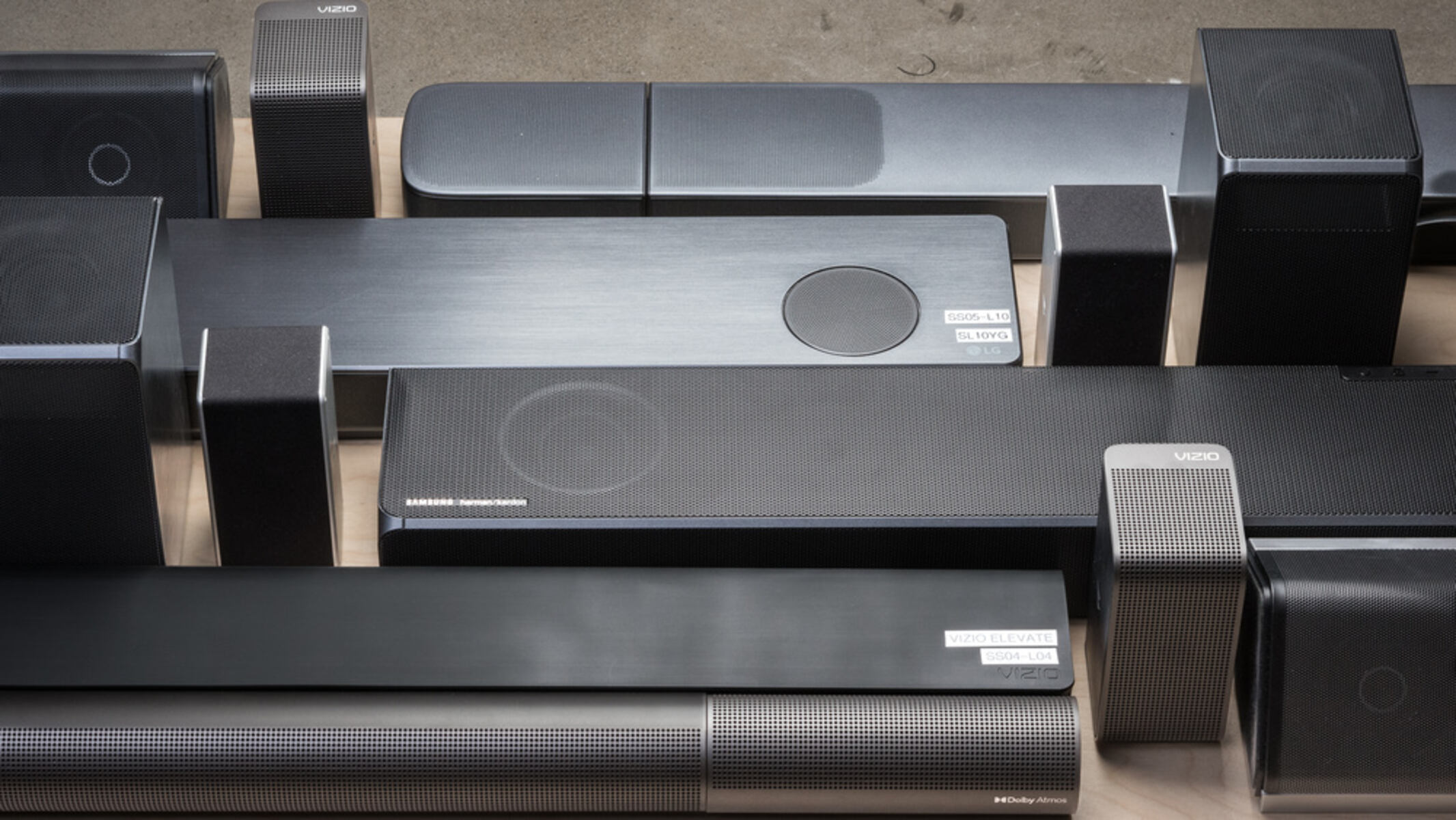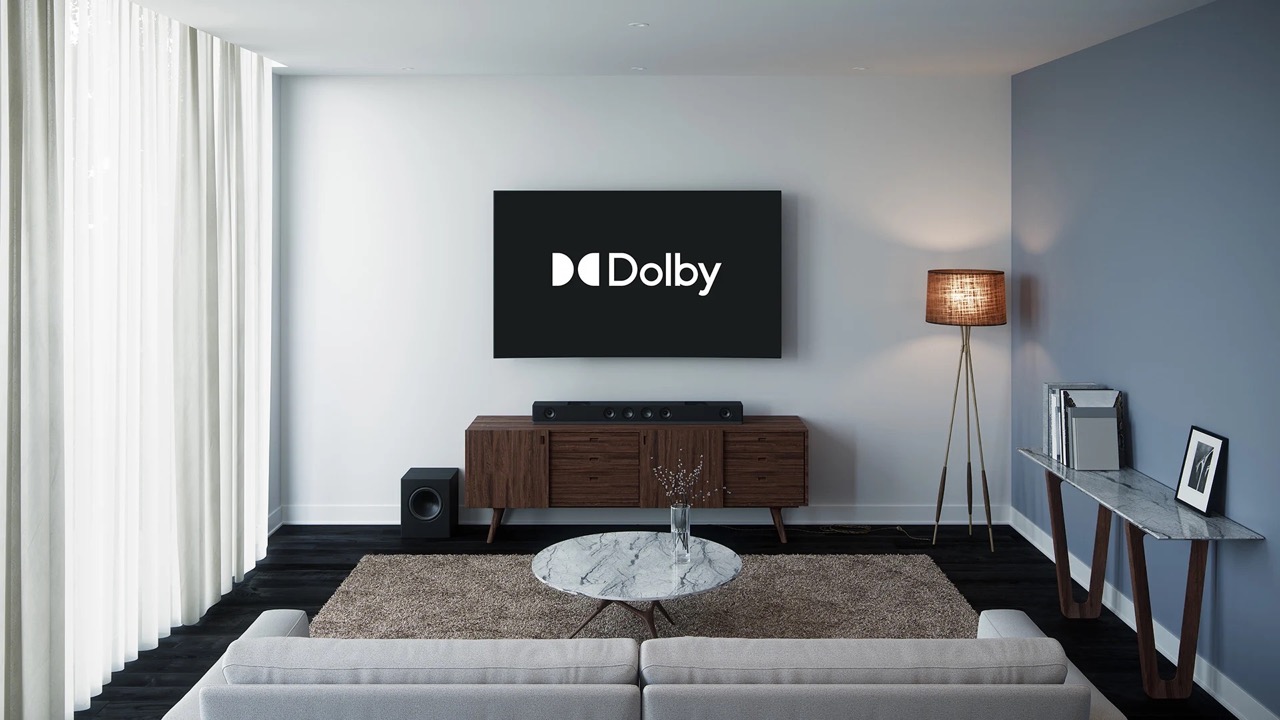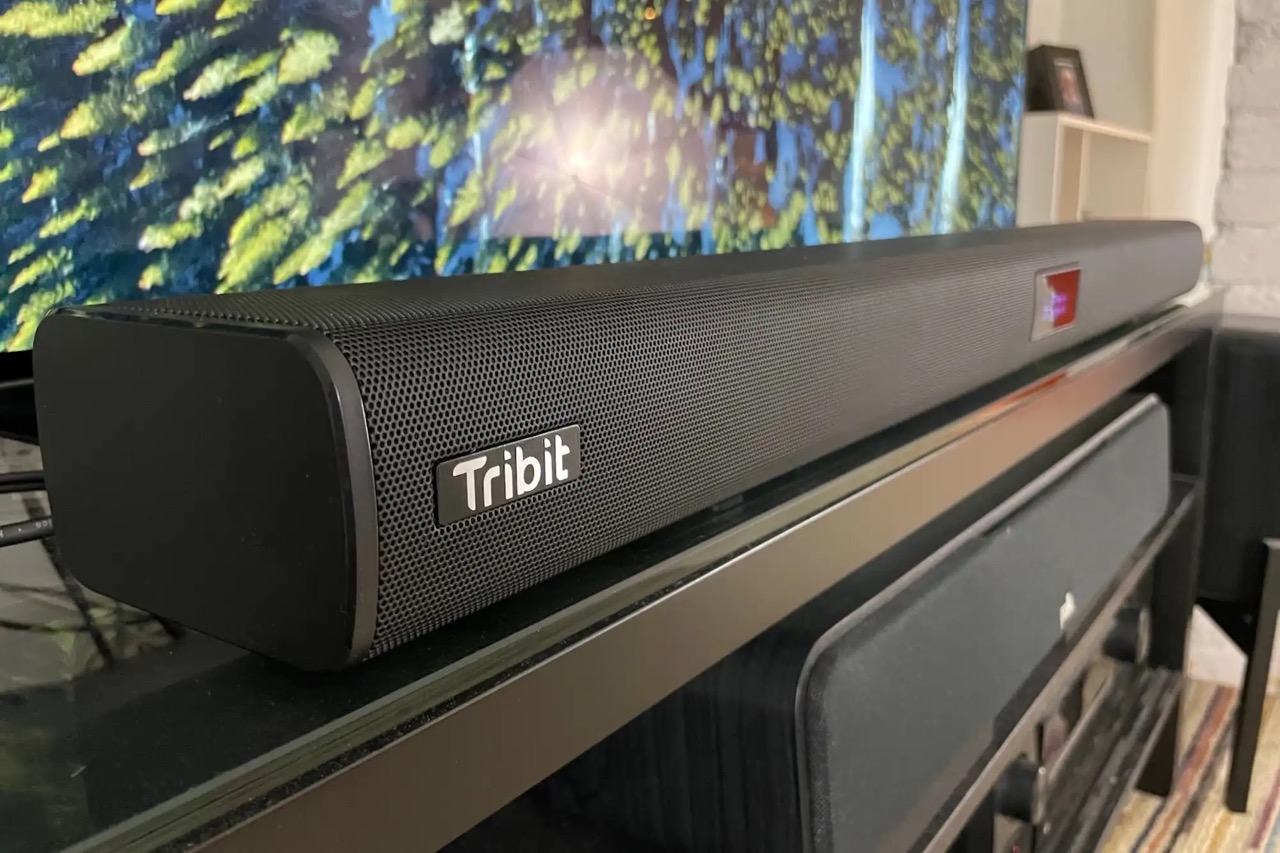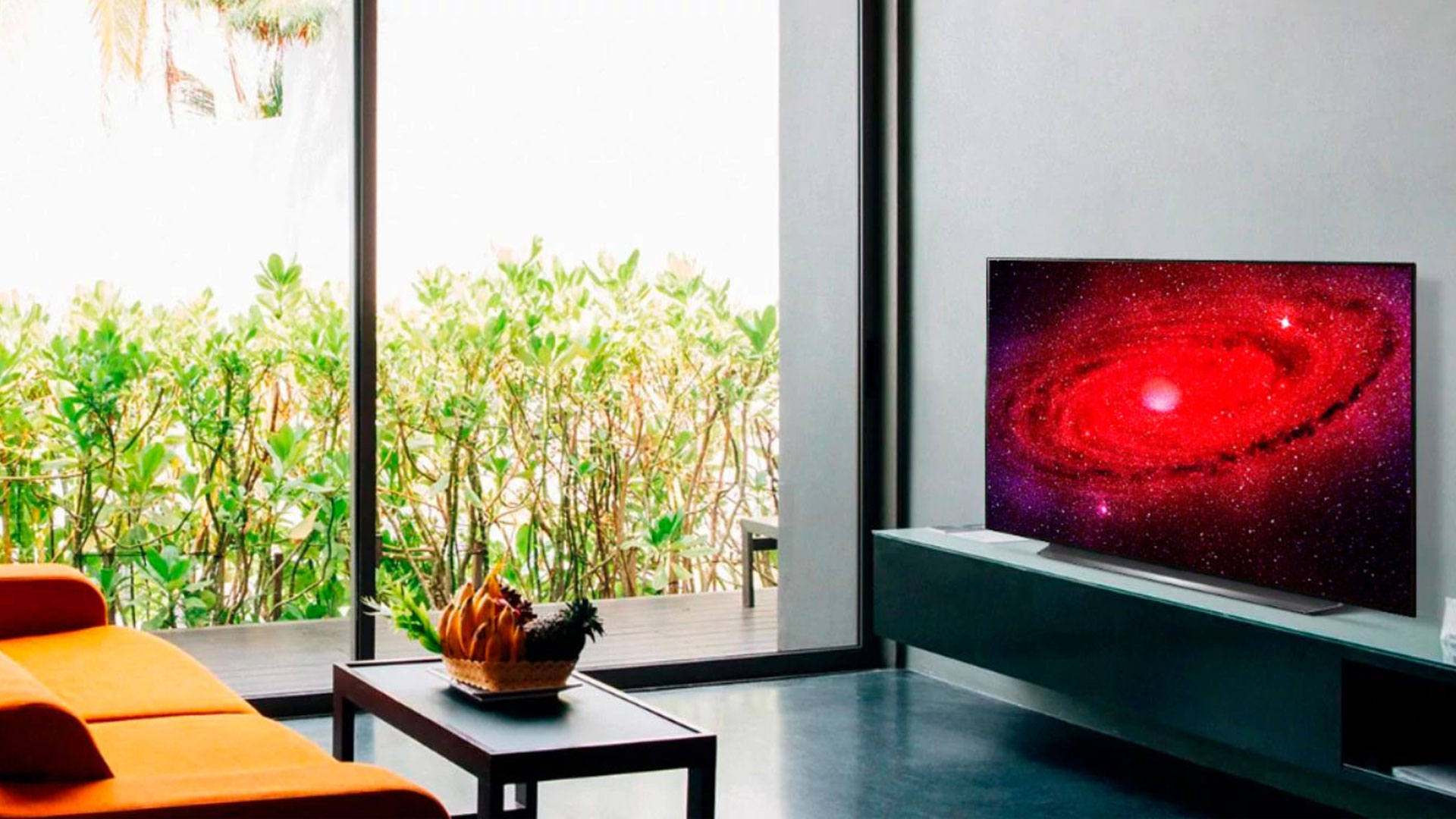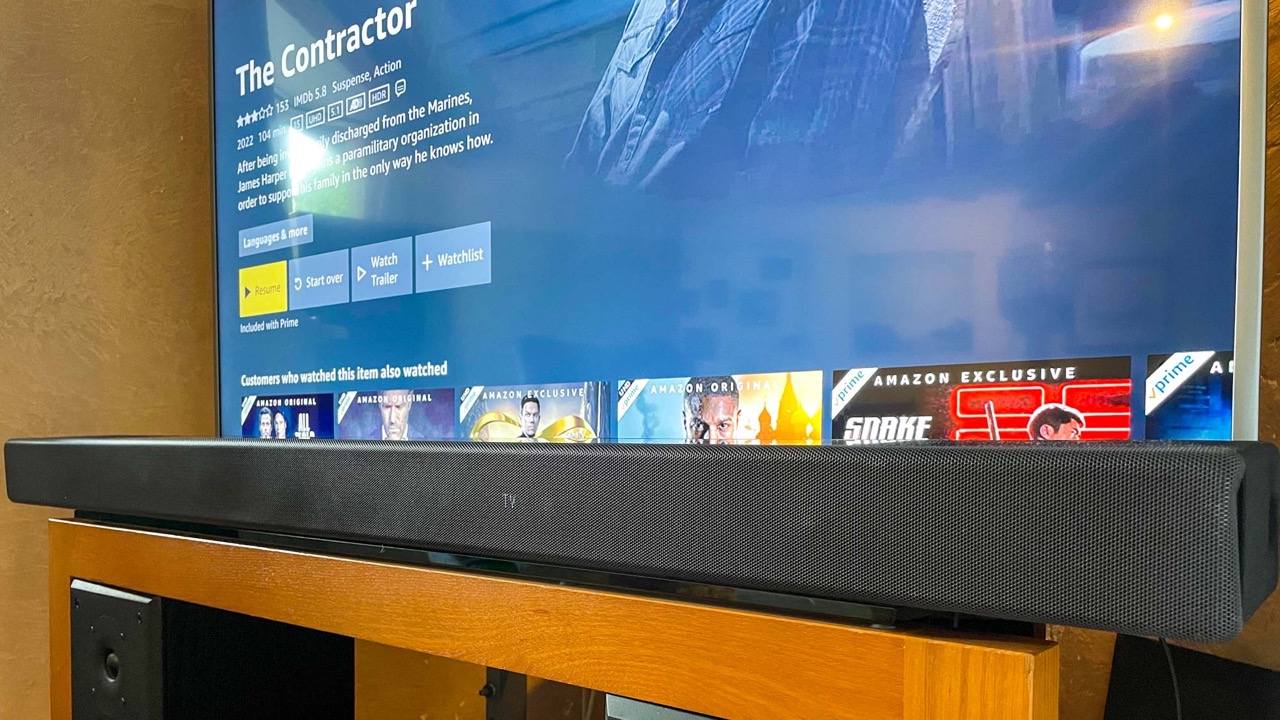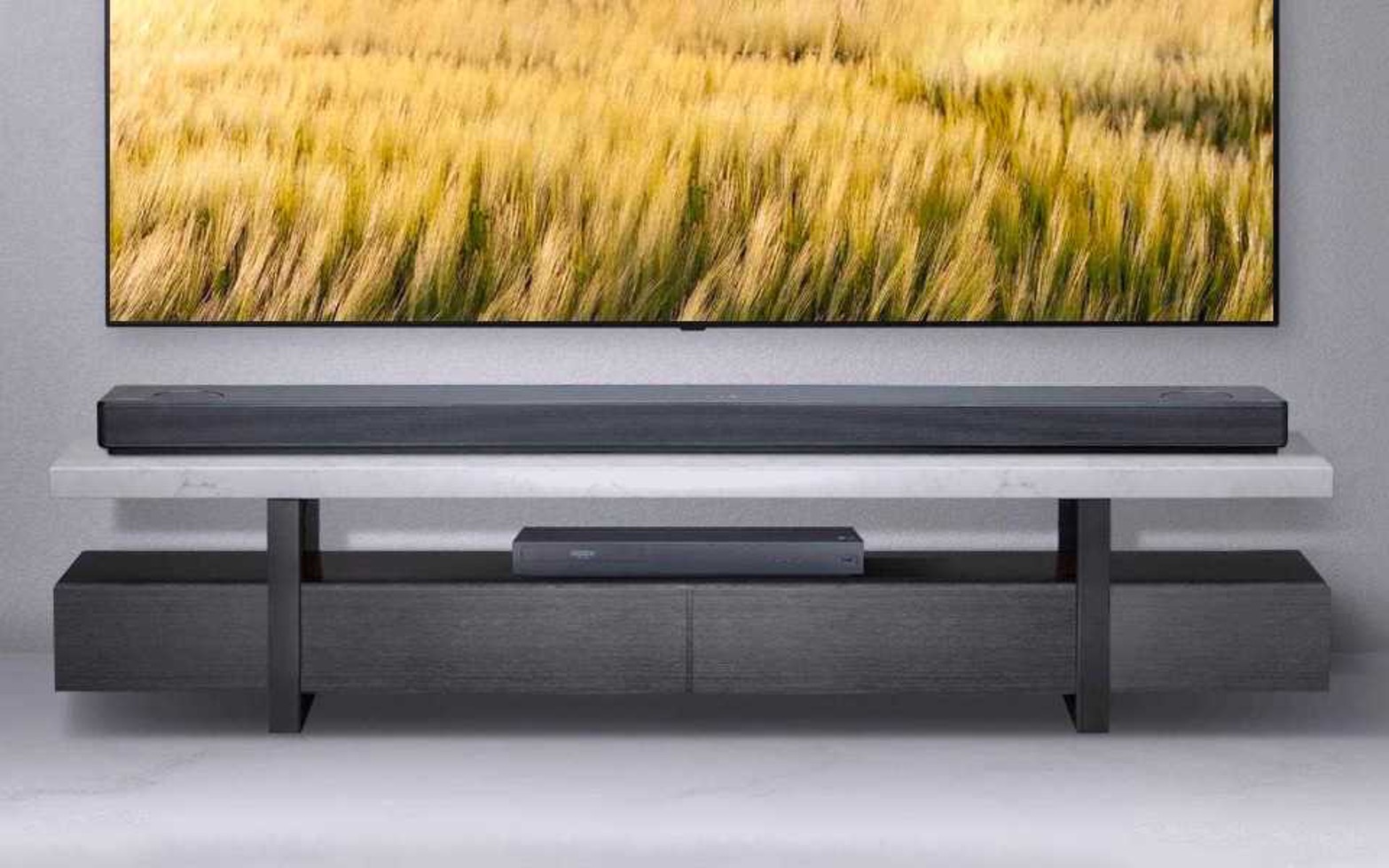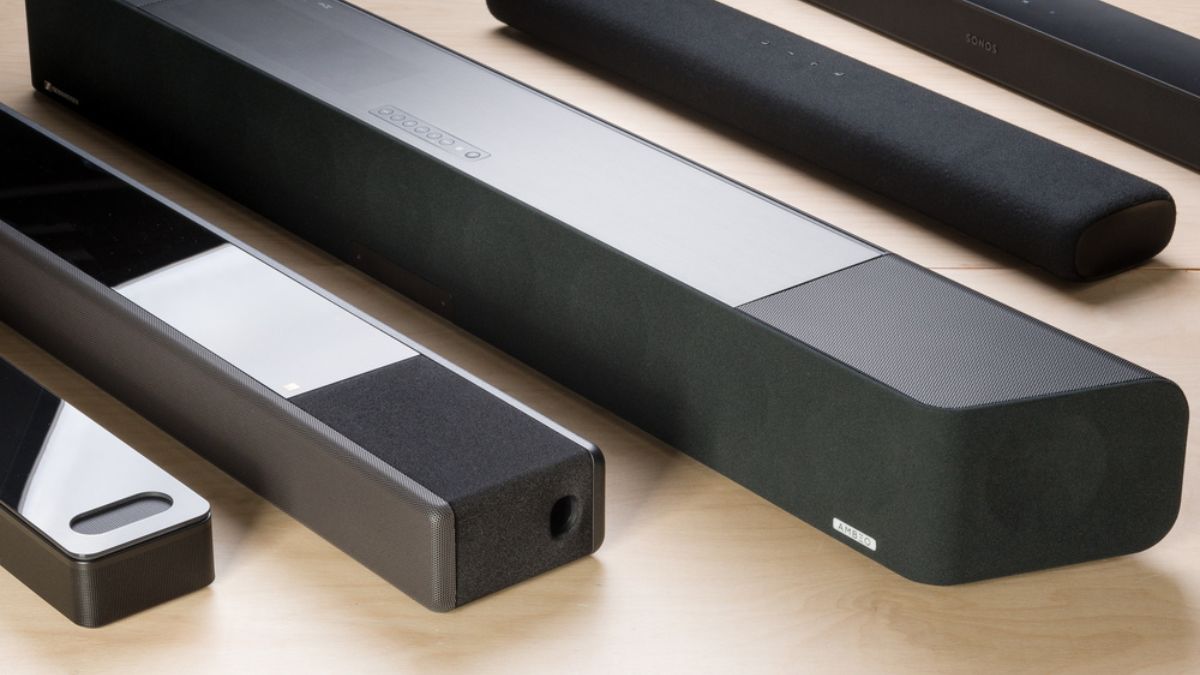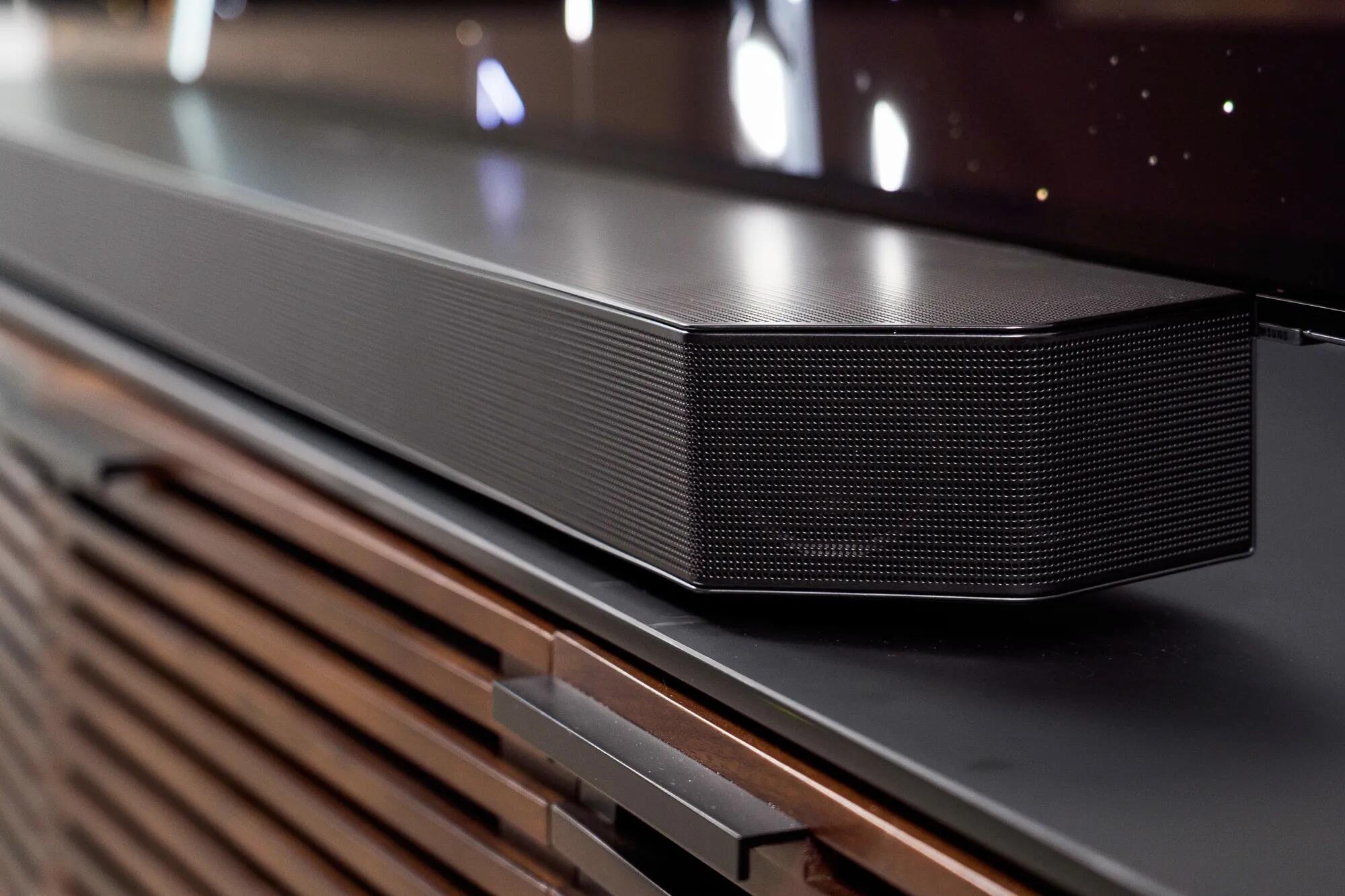Introduction
Welcome to the world of immersive audio! If you’re someone who enjoys watching movies or listening to music, you probably know the importance of having high-quality sound. A soundbar is a popular choice for enhancing the audio experience of your TV or home entertainment system. However, if you want to take it to the next level, you might have come across the term “Dolby Atmos.”
Dolby Atmos is a revolutionary audio technology that brings a three-dimensional sound experience to your living room. It adds a new dimension of depth, clarity, and realism to the audio, making you feel like you’re right in the middle of the action. Whether it’s a thunderstorm in the jungle or a car chase scene, Dolby Atmos takes you on an immersive audio journey like never before.
In this article, we will dive into the world of Dolby Atmos on a soundbar and explore what it is, how it works, the benefits it offers, and how you can experience it at home. So, grab a cup of your favorite beverage, sit back, and get ready to be blown away by the magic of Dolby Atmos on a soundbar.
What is Dolby Atmos?
Dolby Atmos is an advanced audio technology developed by Dolby Laboratories that takes traditional surround sound to the next level. Unlike traditional surround sound systems that operate with a fixed number of audio channels, Dolby Atmos introduces a new concept of object-based audio.
So, what exactly does object-based audio mean? In a traditional surround sound setup, sounds are assigned to specific channels, such as front left, front right, center, rear left, and rear right. However, Dolby Atmos allows individual sounds or audio objects to be placed in a three-dimensional space. This means that audio objects can move and be placed anywhere in the room, creating a more lifelike and immersive soundscape.
Imagine watching a movie where the sound of a helicopter can move seamlessly from left to right, or raindrops can fall directly above you. Dolby Atmos recreates these audio dynamics by providing an incredibly realistic audio experience that truly transports you into the heart of the action.
One of the key features of Dolby Atmos is its ability to add height to the soundstage. In addition to the traditional surround sound channels, Dolby Atmos introduces overhead speakers or up-firing speakers that bounce sound off the ceiling to create the illusion of sound coming from above. This height information adds a new dimension to the audio, creating a truly immersive experience where you can feel the sound moving all around you.
Furthermore, Dolby Atmos is not limited to movies and TV shows. It has also made its way into the world of music, allowing artists and producers to mix their tracks in a way that provides a more enveloping and captivating listening experience. With Dolby Atmos, you can hear instruments and vocals with incredible clarity and precision, as if you were in the recording studio or attending a live concert.
How does Dolby Atmos work?
Dolby Atmos works by combining traditional channel-based audio with object-based audio to create a multidimensional sound experience. The audio content for Dolby Atmos is created and mixed in a studio using a specialized tool called a Dolby Atmos renderer.
When a Dolby Atmos soundtrack is played back on a compatible soundbar, the renderer determines how the audio objects should be positioned in the three-dimensional soundstage. It takes into account the specific speaker setup and room characteristics to deliver the most accurate and immersive audio experience.
In a Dolby Atmos setup, the soundbar serves as the central hub that processes and distributes the audio to the various speakers in your system. The soundbar can decode the Dolby Atmos audio tracks and deliver the object-based audio to speakers placed around your room.
In addition to the traditional front and rear speakers, Dolby Atmos introduces either ceiling-mounted speakers or up-firing speakers. These additional speakers are responsible for delivering the height information in the audio, creating a sense of sound moving above you.
To ensure a seamless audio experience, Dolby Atmos also supports “audio objects.” These audio objects are separate audio elements within the soundtrack, such as footsteps, raindrops, or even specific dialogue. The Dolby Atmos renderer can position and move these audio objects in real-time, based on the content being played, to create a more immersive and dynamic soundstage.
It’s important to note that while Dolby Atmos can deliver an immersive audio experience with just a soundbar, you can further enhance the sound by incorporating additional speakers. This could include rear speakers for a true surround sound setup or dedicated ceiling speakers for a complete overhead audio experience.
Overall, the combination of channel-based audio, object-based audio, and specialized speaker placement allows Dolby Atmos to create a realistic and immersive sound experience that makes you feel like you’re part of the on-screen action.
Benefits of Dolby Atmos on a soundbar
Dolby Atmos on a soundbar offers several benefits that elevate your audio experience to new heights. Let’s explore some of the key advantages:
- Immersive and lifelike audio: Dolby Atmos creates a three-dimensional soundstage that envelops you in sound from all directions, including above you. This immersive audio experience adds a sense of realism and depth, making you feel like you’re part of the on-screen action.
- Heightened sense of detail and precision: Dolby Atmos allows for precise placement and movement of audio objects within the soundstage. This level of control enhances the accuracy and clarity of each sound element, ensuring that you hear even the subtlest details in the audio, such as footsteps or raindrops.
- Expansive soundstage: With Dolby Atmos, the soundstage extends beyond the confines of the physical speakers. The addition of height information makes the audio feel more spacious and creates a sense of audio coming from all around you, resulting in a more immersive and enveloping experience.
- Enhanced dialog clarity: Dolby Atmos technology includes special algorithms that separate dialog from other sounds in the soundtrack. This ensures that the dialog remains clear and intelligible, even during action-packed scenes with intense sound effects, making it easier to follow the story.
- Compatibility with existing content: Dolby Atmos soundbars are designed to work with a wide range of audio formats, including traditional stereo, Dolby Digital, and Dolby TrueHD. This means that even if the content doesn’t have a dedicated Dolby Atmos soundtrack, the soundbar can still enhance the audio quality and create a more immersive experience.
- Flexible and easy setup: Setting up a Dolby Atmos soundbar is relatively straightforward compared to a full-blown home theater system. With just a soundbar and perhaps a few additional speakers, you can achieve a significant audio upgrade without the complexity of multiple cables and speaker placement.
Whether you’re a movie enthusiast, a music lover, or a casual TV viewer, Dolby Atmos on a soundbar offers a compelling audio experience that enhances the entertainment value of your content. From immersive surround sound to enhanced dialogue clarity, this technology brings a new level of realism and excitement to your home entertainment setup.
Do all soundbars support Dolby Atmos?
While Dolby Atmos is a fantastic technology for enhancing your audio experience, it’s important to note that not all soundbars support Dolby Atmos. The ability to decode and reproduce Dolby Atmos audio requires specific hardware and speaker configurations. Therefore, it’s essential to check the specifications of a soundbar before assuming it supports Dolby Atmos.
Soundbars that support Dolby Atmos typically have dedicated upward-firing speakers or utilize virtualization technology to create the illusion of overhead sound. These soundbars are designed to deliver the height information of Dolby Atmos audio tracks, which is crucial for creating an immersive audio experience.
It’s worth mentioning that some soundbars may use Dolby Atmos branding, but they might not provide the full Dolby Atmos experience. These soundbars may have upward-firing drivers, but they lack the necessary complexity and precision to deliver the true Dolby Atmos effect. However, they can still provide an enhanced audio experience compared to traditional stereo soundbars.
When shopping for a soundbar that supports Dolby Atmos, keep an eye out for the “Dolby Atmos” logo or certification. This indicates that the soundbar has been specifically tested and approved to meet Dolby’s standards for reproducing Dolby Atmos audio content accurately.
Additionally, it’s essential to consider the size and layout of your room when choosing a Dolby Atmos soundbar. Larger rooms may benefit from additional speakers or a full home theater system to fully realize the immersive potential of Dolby Atmos. Conversely, for smaller rooms, a soundbar with built-in upward-firing speakers may be sufficient to create a convincing audio experience.
Ultimately, Dolby Atmos support is a premium feature that adds to the cost of a soundbar. If Dolby Atmos is a priority for you, it’s advisable to invest in a soundbar specifically designed to deliver the full Dolby Atmos experience. However, if Dolby Atmos is not a requirement for you, there are still plenty of excellent soundbars available that provide exceptional audio quality without the added Dolby Atmos functionality.
How to experience Dolby Atmos on a soundbar?
To fully experience Dolby Atmos on a soundbar, you need to ensure that your setup is compatible and optimized for this advanced audio technology. Here are the key steps to enjoy Dolby Atmos on a soundbar:
- Choose a Dolby Atmos soundbar: Start by selecting a soundbar that supports Dolby Atmos. Look for the “Dolby Atmos” logo or certification to ensure compatibility and high-quality audio reproduction.
- Position and connect your soundbar: Follow the manufacturer’s instructions to properly position the soundbar in front of or below your TV. Connect the soundbar to your TV using an HDMI ARC (Audio Return Channel) or eARC (Enhanced Audio Return Channel) connection to enable two-way audio communication.
- Ensure compatible content: To experience Dolby Atmos, you need audio content specifically encoded in Dolby Atmos format. Check if your streaming service, Blu-ray player, or other media sources offer Dolby Atmos content. Popular streaming platforms like Netflix, Disney+, and Amazon Prime Video have a growing library of Dolby Atmos-compatible movies and TV shows.
- Enable Dolby Atmos on your devices: Ensure that your devices are set to output audio in Dolby Atmos. This can usually be done in the audio settings menu of your streaming device, Blu-ray player, or gaming console. Select the Dolby Atmos audio output option and make sure it is enabled.
- Calibrate and optimize your soundbar: Most Dolby Atmos soundbars come with calibration features that help optimize the audio performance based on your room’s acoustics. Follow the manufacturer’s instructions to run any calibration or optimization procedures to achieve the best possible sound quality.
- Position additional speakers: If you have additional speakers, such as rear speakers or overhead speakers, position and connect them according to the manufacturer’s instructions. This step is optional but can enhance the overall Dolby Atmos experience by fully utilizing the object-based audio and height information.
- Select Dolby Atmos content: Look for movies, TV shows, or music that are encoded in Dolby Atmos format. These titles are specifically mixed to take advantage of the Dolby Atmos technology, providing a more immersive and captivating audio experience.
- Sit back, relax, and enjoy: Once everything is set up and configured correctly, sit back and immerse yourself in the world of Dolby Atmos. Enjoy the three-dimensional audio experience as sounds move around you, creating a cinema-like atmosphere in the comfort of your own home.
By following these steps and ensuring a compatible setup, you can fully unlock the immersive audio capabilities of Dolby Atmos on your soundbar, allowing you to enjoy your favorite movies, TV shows, and music like never before.
Tips for setting up Dolby Atmos on a soundbar
Setting up Dolby Atmos on a soundbar can greatly enhance your audio experience, providing a more immersive and realistic soundstage. Here are some tips to help you optimize your Dolby Atmos setup:
- Choose the right room: Select a room that is well-suited for audio playback. Ideally, choose a room with minimal background noise and limited reflective surfaces to prevent sound distortion.
- Position the soundbar correctly: Place the soundbar either below or in front of your TV, ensuring that it’s centered and at ear level when seated. This helps maintain optimal audio separation and imaging.
- Follow the manufacturer’s instructions: Read the user manual and follow the manufacturer’s instructions carefully for proper installation and setup of your Dolby Atmos soundbar. This ensures that you maximize its performance and get the best possible audio quality.
- Consider additional speakers: While a soundbar can provide a great Dolby Atmos experience on its own, consider adding rear speakers or ceiling speakers to further enhance the audio immersion. This allows for a more complete surround sound experience and better overhead audio effects.
- Optimize speaker placement: If you decide to incorporate additional speakers, follow the manufacturer’s guidelines for proper speaker placement. Position them according to their recommended angles and height to ensure accurate audio positioning and seamless sound movement.
- Utilize calibration features: Most Dolby Atmos soundbars offer calibration features to optimize audio performance based on your room’s acoustics. Run these calibration tools as they can significantly enhance the audio quality and ensure the best possible soundstage.
- Use high-quality content: While Dolby Atmos enhances the audio experience, the quality of the content you are watching or listening to also matters. Choose movies, TV shows, and music that are specifically encoded in Dolby Atmos format for the most immersive audio playback.
- Experiment with audio settings: Take the time to explore the different audio settings on your soundbar. Adjust the equalizer settings, sound modes, and other audio parameters to find the sound signature that best suits your preferences and the type of content you’re consuming.
- Ensure proper room acoustics: Consider adding acoustic treatment to your room to minimize sound reflections and reverberations. This helps improve audio clarity and enhances the overall Dolby Atmos experience.
- Regularly update firmware: Check for firmware updates for your soundbar and keep it up to date. Firmware updates often bring improvements and fixes that can enhance overall performance and address any known issues.
By following these tips, you can optimize your Dolby Atmos setup and enjoy the full potential of immersive audio on your soundbar. Experiment with the settings and make adjustments based on your preferences and the characteristics of your room to achieve the most engaging and realistic audio experience.
Conclusion
Dolby Atmos on a soundbar brings a new level of immersion and realism to your audio experience. With its ability to create an expansive soundstage, precise audio object positioning, and overhead sound effects, Dolby Atmos takes you closer to the action, making you feel like a part of the on-screen world.
While not all soundbars support Dolby Atmos, choosing a soundbar specifically designed for this technology ensures a seamless and optimized audio experience. Ensure that your setup includes the necessary hardware, such as upward-firing speakers or dedicated overhead speakers, to fully enjoy the three-dimensional audio sensation.
Setting up Dolby Atmos on a soundbar requires careful consideration of speaker placement, room acoustics, and proper calibration. Taking the time to position the soundbar correctly, optimizing speaker placement, and utilizing calibration features can significantly enhance the Dolby Atmos experience.
Remember to seek out Dolby Atmos-encoded content, such as movies, TV shows, and music, to fully unlock the potential of your Dolby Atmos soundbar. The specifically mixed audio tracks will provide you with an immersive sound experience that truly brings your entertainment to life.
Whether you’re a movie enthusiast, a music lover, or simply want to enhance your TV viewing experience, Dolby Atmos on a soundbar offers a captivating and realistic audio journey right in the comfort of your own home.
So, take the leap into the world of Dolby Atmos on a soundbar and let the power of immersive audio elevate your entertainment experience to new heights!







